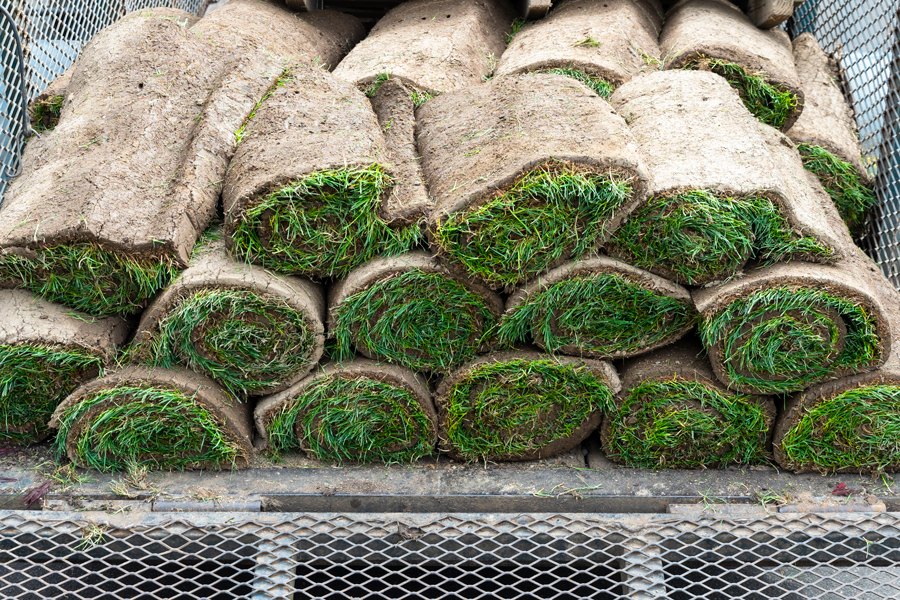Crop and Soil Sciences
-

These irrigation budgets, developed by University of Georgia Cooperative Extension, are estimates of the irrigation costs of a center pivot irrigation system located in southeast Georgia. Our intention is to provide flexible, user-friendly irrigation budgets with default values. That being said, the variation among different farm conditions can impact investment costs and annual costs associated with irrigation; users are suggested to modify these default values and customize their budgets according to their specific field conditions. Please consult your irrigation providers for properly designed center pivot systems that match well production to achieve your irrigation goals. This should serve as a generalized user guide for irrigation budgets and provide guidance for adjusting the default values in the budgets.
Calvin D. Perry, Amanda R Smith, Wesley Porter, Cale Cloud, and Yangxuan Liu
|
-

Successful lawn care requires a basic understanding of soil properties. A healthy plant starts with healthy soil. Soil is a complex relationship of soil minerals, organic matter, soil inhabiting organisms, and plants along with water and air. Understanding when and how to aerate the soil and understanding what pH is and how it affects plant health is essential for turfgrass health. This publication aims to help homeowners and landscape professionals improve soil fertility through the techniques discussed.
Clint Waltz and Becky Griffin
|
-

B 1533-2
Lawns in Georgia: Establishment
Turfgrass enhances the landscape in ways that can be particularly important in urban environments. Turf is one of the most effective plant covers to reduce soil erosion and surface runoff while recharging ground water, which results in more efficient use of rainfall. In most landscapes turf occupies the largest area and provides an ideal surface for outdoor activities. It begins with selecting the best adapted species and cultivar for an individual site— right plant, right place. Once the proper species and cultivar have been selected, getting the site properly prepared for growing grass and getting it established is critical in creating a sustainable lawn.
Clint Waltz
|
-

Ryegrass threatens Georgia wheat production as herbicide resistance has become very problematic. Aggressive resistant management programs must be implemented; ignoring this warning will ensure resistance that threatens long-term sustainability of grain production.
Wild radish is the most problematic broadleaf weed infesting Georgia wheat. Wild radish seed pods often contaminate harvested grain, thereby reducing profits. Managing wild radish is not difficult if timely management decisions are implemented.
This publication provides commercial wheat producers with herbicide options and critical thinking points on controlling ryegrass and wild radish.
Stanley Culpepper
|
-

A farm’s return on investment is directly affected by the way water is applied to its crops. The wrong end-gun settings can result in overwatering or underwatering large portions of field acres. Clogged or partially clogged nozzles lead to obvious water shortages that can be visually observed or measured using yield monitors. Systems not properly checked and maintained can lead to significant losses in potential income. This irrigation reference guide will contain information provided by UGA Extension recommended irrigation scheduling rates for corn, cotton, peanuts and soybeans. The guide will also recognize specific center pivot application issues and how to correct them.
David Hall and Wesley Porter
|
-

This report provides research and extension results for trials conducted by the University of Georgia Vegetable Team and its collaborators in 2020. Contributing authors include county and regional faculty as well as specialists from UGA’s horticulture, plant pathology, crop and soil sciences, and entomology departments.
Juan Carlos Diaz-Perez, Timothy Coolong, Bhabesh Dutta, Andre Luiz Biscaia Ribeiro da Silva, and Abolfazl Hajihassani
|
-

This resource helps Georgia residents select the best-adapted grass species and cultivar for an individual site to ensure a thriving lawn.
Clint Waltz
|
-

This annual publication includes a report of 2019-20 onion research variety trials and Extension activity at the University of Georgia College of Agricultural and Environmental Sciences. The report contains the results of research awarded by the Vidalia Onion Commodity Commission.
Juan Carlos Diaz-Perez, Jason Lessl, Bhabesh Dutta, Andre Luiz Biscaia Ribeiro da Silva, and Angelos Deltsidis
|
-

This research report presents results of the 2019-2020 performance tests of small grains grown for grain and forage. Grain evaluation studies were conducted at five locations in Georgia, including Tifton, Plains, and Midville in the Coastal Plain region; Athens in the Piedmont region; and Rome in the Limestone Valley region. An additional study was conducted at Citra, Florida. Winter annual forage tests were conducted at all Georgia grain sites except Midville, and also at Headland and Clanton, Alabama. Multiple tests were lost this year due to the impact of Covid-19 on university operations. For identification of the test locations, consult the map inside the back cover of this report.
Daniel J Mailhot
|